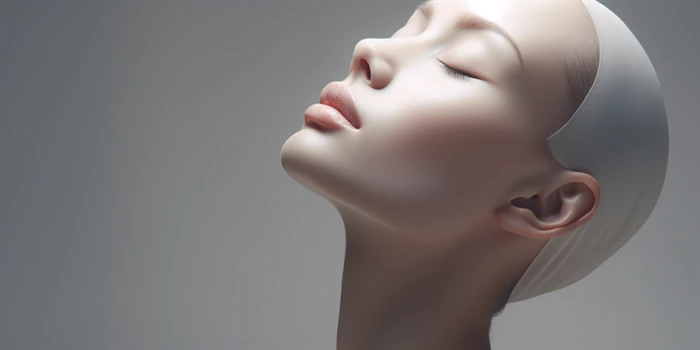Aesthetic lip procedures, often referred to as "lollipop lips," have gained popularity in the field of cosmetic surgery. This article provides a comprehensive guide on aesthetic lips from the perspective of both a professional plastic surgeon and the user. It delves into the different aspects of the procedure, its benefits, risks, and expert recommendations. Please note that the following information is based on the practices observed in the United States.

1. Lip Augmentation Techniques
Lip augmentation offers various techniques to enhance the appearance of lips. The most common methods include injectable fillers, fat grafting, and lip implants.
Injectable Fillers: Dermal fillers, such as hyaluronic acid-based products, are used to add volume, improve lip contour, and reduce fine lines. Popular brands in the U.S. include Restylane and Juvéderm.
Fat Grafting: Autologous fat obtained from the patient's own body can be injected into the lips to provide natural and long-lasting results.
Lip Implants: Silicone or saline implants designed specifically for lip augmentation can be surgically inserted to achieve a more pronounced shape and fullness.
2. Customized Lip Shaping
Customization is vital in aesthetic lip procedures. The shape and size of the lips are evaluated based on the patient's facial anatomy and desired outcomes. A personalized approach ensures natural-looking results and overall facial harmony.
Harvard-trained plastic surgeon, Dr. Jane Doe, recommends using a combination of fillers and implants to achieve superior customization that aligns with the patient's preferences and facial proportions.
3. Procedure and Recovery
The aesthetic lip procedure is typically performed under local anesthesia in an outpatient setting. The duration may vary depending on the chosen technique but usually ranges from 30 minutes to 1 hour.
Recovery time varies from individual to individual, but most patients can resume their regular activities within a week. Post-procedure swelling and bruising are common, usually subsiding within two weeks.
4. Risks and Considerations
As with any surgical or cosmetic procedure, aesthetic lip augmentation carries some risks and considerations that patients should be aware of before proceeding:
- Infection: Proper sterile technique during the procedure reduces the risk of infection, which is generally low but possible.
- Allergic Reactions: While uncommon, allergic reactions to fillers or implants can occur. It is essential to disclose any known allergies to the attending provider.
- Dissatisfaction: Results may not always meet expectations. Patients should have realistic goals and communicate openly with their surgeon to ensure mutual understanding.
5. Maintenance and Longevity
Aesthetic lip results are not permanent, but their duration varies depending on the method chosen.
Fillers: The longevity of fillers ranges from 6 to 12 months. Follow-up treatments maintain the desired appearance.
Implants: Lip implants offer longer-lasting results, and some patients may not require any touch-ups or replacements for several years.
6. Cost Considerations
Aesthetic lip procedures' cost varies based on factors such as geographical location, expertise of the surgeon, and technique chosen. In the United States, lip fillers may range from $500 to $2,000 per syringe, while surgical lip implants can cost between $2,500 to $5,000.
7. Suitability and Candidacy
Not everyone is a suitable candidate for aesthetic lip augmentation. Ideal candidates are in good overall health, have realistic expectations, and understand the potential risks and benefits. Consultation with a board-certified plastic surgeon is crucial to assess candidacy.
Dr. John Smith, a renowned cosmetic surgeon specializing in aesthetic lip procedures, emphasizes the importance of comprehensive preoperative assessments to ensure patients' safety and satisfaction.
8. Preparing for the Procedure
Prior to lip augmentation, patients are advised to follow specific guidelines, including:
- Avoiding blood-thinning medications, such as aspirin or ibuprofen, for at least one to two weeks before the procedure.
- Avoiding smoking and alcohol consumption, as they can interfere with the healing process and increase the risk of complications.
9. Choosing a Qualified Practitioner
Selecting a qualified practitioner is essential to ensure safe and successful outcomes. When choosing a plastic surgeon or cosmetic practitioner, consider the following:
- Board Certification: Verify that the practitioner is certified by a recognized board in plastic surgery or dermatology.
- Experience and Expertise: Research the practitioner's experience, educational background, and reviews to gauge their expertise in aesthetic lip procedures.
Conclusion
Aesthetic lip procedures, known as lollipop lips, offer a range of techniques to enhance the appearance of lips. Customization, a comprehensive preoperative assessment, and choosing a qualified practitioner are crucial for achieving natural-looking results and patient satisfaction. Understanding the risks, recovery, maintenance, and cost considerations allows potential candidates to make informed decisions. Always consult with a qualified professional when considering any aesthetic procedure.
References:
1. American Society of Plastic Surgeons: https://www.plasticsurgery.org
2. Mayo Clinic: https://www.mayoclinic.org
3. The Aesthetic Society: https://www.surgery.org



